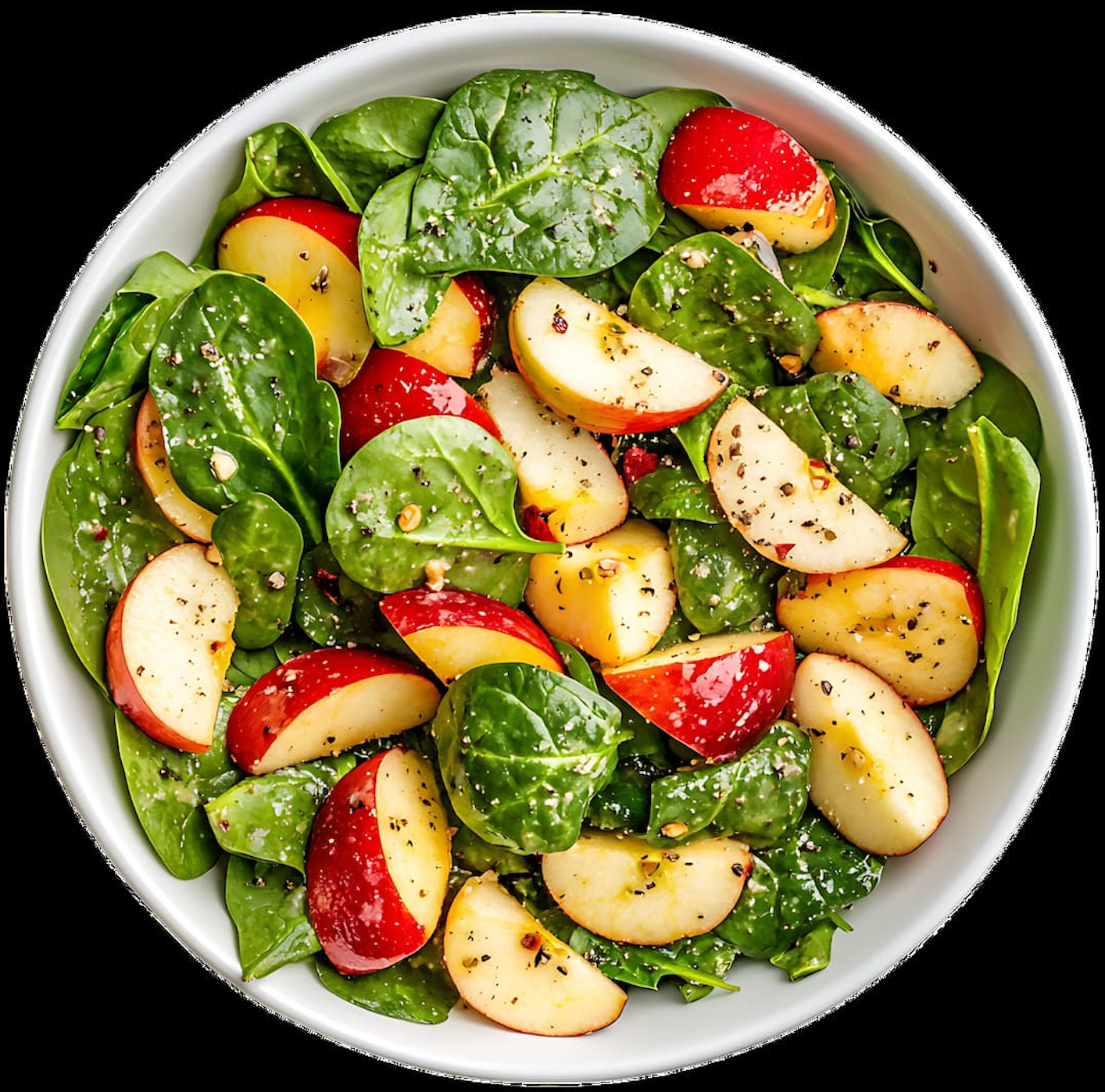Alcohol and Your Liver: Expert Advice Plus a Recipe to Support Healing
Pranay Nadella, M.D., explains how alcohol-associated liver disease develops, what steps can slow or prevent it, and how healthy eating — like this apple and spinach salad — can support recovery.
By
Lana Pine
| Published on August 8, 2025
6 min read
Credit: Adobe Stock/Elijah

Alcohol-associated liver disease (ALD) is one of the most common yet preventable causes of chronic liver damage. In this interview, Pranay Nadella, M.D., a third-year internal medicine resident at Brigham and Women’s Hospital and future gastroenterology and hepatology specialist, breaks down how ALD develops, why there’s no truly “safe” level of alcohol for health and the crucial first steps in treatment. He also emphasizes that ALD can progress without symptoms, making early checkups vital for those who drink regularly. His advice extends beyond alcohol cessation — focusing on weight management, exercise and a nutrient-rich diet to help support liver health.
Eating well is a cornerstone of supporting liver function. The American Liver Foundation (ALF) shares a liver-friendly recipe that is light and refreshing, combining fresh spinach, crisp apple slices, carrots, cucumber and walnuts with a simple balsamic vinaigrette. High in fiber, low in sodium and packed with antioxidants, it’s a great addition to a liver-friendly diet.
Crispy Apple and Spinach Salad
Nutrition Facts Per Serving (2):
- Calories: 200
- Total Fat: 6g
- Saturated Fat: 1g
- Trans Fat: 0g
- Sodium: 0mg
- Total Carbohydrate: 26g
- Dietary Fiber: 3g
- Sugars: 3.5g
- Protein: 4g
Ingredients:
- 2 cups fresh spinach leaves
- 1 small apple, thinly sliced (about 4 ounces)
- 1/4 cup shredded carrots
- 1/4 cup sliced cucumber
- 1 tablespoon chopped walnuts (optional)
- 1 tablespoon balsamic vinegar
- 1 teaspoon extra virgin olive oil
- Freshly ground black pepper, to taste
Instructions:
- In a large bowl, combine the fresh spinach leaves, thinly sliced apple, shredded carrots and sliced cucumber.
- In a small bowl, whisk together the balsamic vinegar and olive oil. Season with freshly ground black pepper to taste.
- Drizzle the dressing over the salad and toss gently to coat. Sprinkle chopped walnuts on top if using. Serve and enjoy!
What is ALD, and how does it develop over time?
Pranay Nadella, M.D.: ALD is damage to the liver that occurs over time due to drinking alcohol. When alcohol is consumed it causes damage to liver cells. Typically, the liver is very good at repairing itself from injury. However, when alcohol is consumed frequently and over a long period of time, liver cells get damaged, don’t have time to recover, and the liver can develop scarring. This scarring can lead to chronic liver disease which include not filtering toxins and building up pressure in the GI system leading to fluid buildup and infections, not producing important molecules for the body including molecules that help us stop bleeding, and even cancer.
Is there a “safe” level of alcohol consumption?
PN: More recent research shows that there is no safe level for alcohol consumption when it comes to overall health. Even a small amount of alcohol increases the risk of heart disease and cancer. With regards to preventing liver disease, staying at or below the recommended 1 drink per day for women or 2 drinks per day for men helps decrease risk. However, for people who already have liver disease, there is no safe level of alcohol consumption.
Is ALD reversible?
PN: Unfortunately alcohol-associated liver disease is not always reversible. When people develop hepatic steatosis, or “fatty liver” from alcohol consumption, that can typically be reversed and even earlier stages of fibrosis or liver scarring can be improved. However, typically later stages of alcohol-associated liver disease called cirrhosis cannot be fully reversed.
If someone is diagnosed with ALD, what are the first steps in treatment?
PN: The first step in treatment is to stop drinking alcohol. This is a difficult thing to do and there are several medications available to help people quit drinking. However, if a patient is not able or ready to fully stop drinking, there are still other treatments that can improve their liver health. Many patients with ALD also have high body mass index (BMI), blood sugars or cholesterol which are also contributing to their liver disease, so improving these risk factors can help their ALD. If ALD has progressed to cirrhosis, then there are also important vaccinations and screening tests that patients should get.
What other lifestyle changes can support liver healing and overall health for someone with ALD?
PN: Stopping or at least decreasing drinking would help support the liver to heal. Weight loss to reach a normal BMI, exercise and a healthy diet also help the liver. If ALD has progressed to cirrhosis, then a diet low in salt and high in protein is recommended.
What do you wish more people knew about ALD?
PN: I wish that people knew that ALD could develop without symptoms, so if you or someone you know drinks high amounts of alcohol, please come in to see a medical provider to get a checkup of your liver.
What tools or resources (support groups, treatment centers, online education) do you recommend for patients and families?
PN: I recommend: 1) Seeing a doctor about your alcohol use. There are medicines available like naltrexone and acamprosate that help people decrease alcohol consumption. Sometimes people do need the help of rehab programs to stop drinking and that’s OK. 2) Join Alcoholics Anonymous or another peer support group. 3) Follow the ALF website to learn more about liver disease, the latest news and novel treatments.

